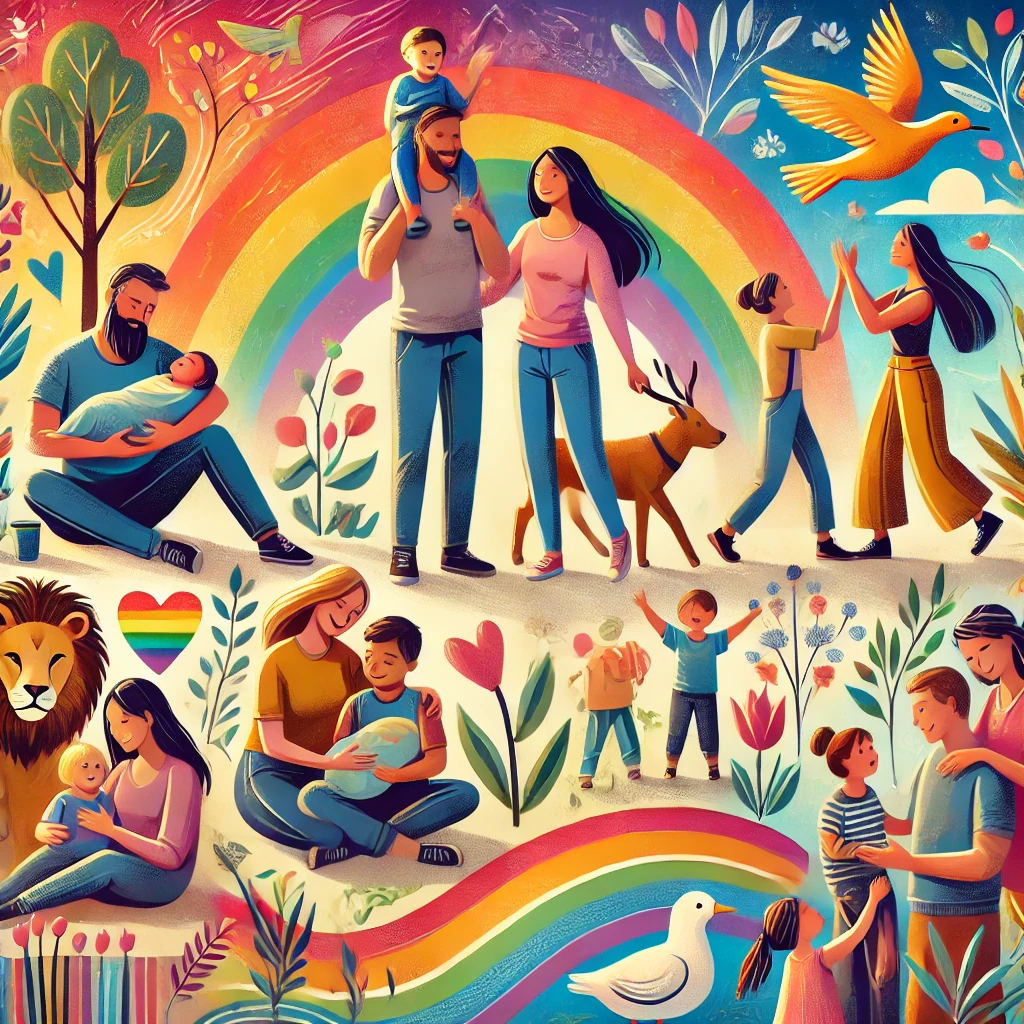
The age-old belief that children need biological parents to truly flourish is being challenged. Real-life stories and modern research reveal a brighter truth: It’s not DNA that defines family, but the love, support, and nurturing that create happy, thriving kids.
Nurturing in the Animal Kingdom
Even in the animal kingdom, we see examples of successful child-rearing without a traditional nuclear family. Lion cubs thrive under a mother’s care, and wolf pups learn from their pack. This reminds us that family comes in many forms, and biological ties aren’t the sole path to happiness.
The Power of Community in Child-Rearing
The adage “It takes a village to raise a child” isn’t just a saying—it reflects how human communities have always supported each other in nurturing the next generation. Extended family, friends, mentors, and neighbors all play vital roles in shaping a child’s world.
Shifting Perspectives on Family: Embracing Diversity
The traditional household model with two biological parents isn’t the only formula for success. Today, we celebrate the beautiful diversity of families—single parents, blended families, LGBTQ+ families, and adoptive families. These diverse families share a commitment to love and support, proving that blood ties aren’t the only bonds that matter.
The Key Ingredient: A Loving and Supportive Environment
Studies consistently show that a loving and supportive environment is the most crucial ingredient for a child’s well-being. When children feel safe, cared for, and encouraged, they blossom into happy, confident individuals, regardless of their family structure. Research from the American Psychological Association (APA) confirms that children raised in stable, nurturing homes have similar emotional and developmental outcomes regardless of family makeup.
Conclusion: Embrace the Possibilities of Diverse Families
Let’s open our minds to the myriad ways families are formed and children are raised. Let’s celebrate the power of love, connection, and community in shaping happy, healthy children. The traditional family model might not be the only answer. By embracing diversity and recognizing the value of a supportive network, we can create a world where every child feels loved and cherished, regardless of their family background.
External Resources:
- American Psychological Association: https://www.apa.org/
- The Family Equality Council: https://familyequality.org/
- The Trevor Project: https://thetrevorproject.org/
Internal Links: